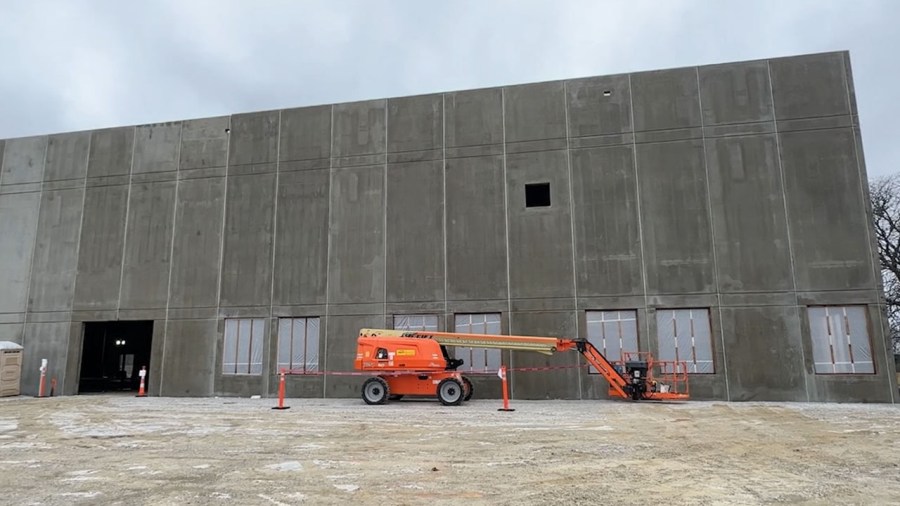Hundreds of earthquakes have shaken the Greek island of Santorini in the past week.
The popular tourist destination in the heart of the Mediterranean is also one of the most volcanic islands in the region.
The tremors have led to a short-term evacuation from the island as some 6,000 people locals and visitors have left the island amid speculation of a potential volcanic eruption or tsunami, should a more severe earthquake occur.
The Greek Seismological Service’s chief Efthimis Lekkas told media on Tuesday that “the peculiarity of the current seismic activity is that so far no quake has been observed that could be described as the main quake.”
Where are the earthquakes near Santorini?
Tremors have been registered in the Cyclades, a group of islands which includes Santorini, Amorgos, Ios and Anafi.
The earthquakes are originating from an area near the small islet of Anydros, north-east of Santorini.
The islands sit atop the Aegean Sea plate, part of the larger Eurasian tectonic plate, which is moving away from the nearby African plate. The interactions between these two tectonic plates make the Greek archipelago one of the most seismically active parts of Europe.
How intense have the tremors been?
Hundreds of individual tremors have been registered since last week. Many of these have been unnoticed by people on land and are of low magnitude.
George Kaviris, director of the seismological laboratory at the University of Athens, said ongoing low-level tremors have been taking place in the region for months, “since June 2024,” he told DW.
This cluster of activity halted, according to Kaviris, on January 25. A new series of tremors then began the following day
“We have seen more than 2,300 earthquakes and many of them — over 45 now — have a magnitude over 4, which is a phenomenon that is very seldom.”
“Moderate” quakes such as these can be felt by people on land and may also cause minor structural damage to buildings.
These tremors have prompted people to leave these islands for the mainland.
What are the risks associated with these tremors?
Scientists may be able to measure ongoing tremors but have no way of predicting where and when further destabilization will occur.
However Kaviris said one of two scenarios are most likely to happen. “The first is that this could be a ‘seismic swarm’,” he said.
Swarms are clustered seismic events — collections of ongoing tremors which people can feel but are not particularly destructive to buildings and infrastructure.
“This one [scenario] is optimistic and the one that we hope.”
The second is a larger earthquake measuring upwards of magnitude 5, which carries with it greater risk of destructive impact.
Could there be a tsunami, volcanic eruption or landslides?
Kaviris said the activity taking place in the Aegean Sea is tectonic in nature and unlikely to lead to volcanic activity.
Experts are also monitoring volcanic activity nearby the Cyclades islands.. The Kolumbo undersea volcano is around 8km northeast of Santorini.
“Magma has spread laterally from Santorini or Kolumbo, however, more precise data are needed to confirm or rule out this hypothesis,” said Eleonora Rivalta, a magma propagation expert at GFZ Helmholtz Centre for Geosciences, Potsdam.
“The distinction is crucial, as tectonic quakes usually occur as single stress releases. Magmatic processes, on the other hand, can potentially be associated with further magma ascent and an increased risk of eruption.”
According to Kaviris, there is a low risk of a tsunami in the event of a large earthquake. While a tsunami is improbable, an earthquake in 1956 did lead to such an event.
He advised people in the region to seek higher land during the current round of tremors, rather than taking a boat to the mainland.
“They should leave the beach and go to a higher place,” he said.
Landslides and rock falls have already been reported in some parts of the archipelago. This also poses a safety risk.
“In the last two days when the seismic activity increased with strong earthquakes in the area, we saw landslides in places in Santorini,” structural seismologist Basil Margaris from Greece’s Institute of Engineering Seismology and Earthquake Engineering told DW.
Although newer buildings across the Greek islands have strict codes to meet, some older buildings may be vulnerable to more severe earthquakes.
“People in Santorini prefer to live just at the edge of a place with a panoramic view, but on the other side, these areas are very dangerous,” Margaris said.
“In some cases, we have made some warnings to the local authorities to be more careful of these specific sites.”
Edited by: Fred Schwaller
This story was updated on Jan. 5 including information on volcanic monitoring.
#major #seismic #event #happen








Leave a Reply